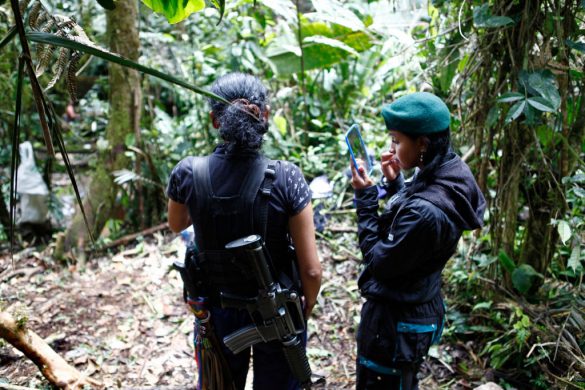UN Secretary-General Kofi Annan Monday launched a 3.000-page document which research team leader, Special Adviser Jeffrey Sachs, called “a unique report” recommending that rich countries double their investments in poor countries to reach the Millennium Development Goals (MDGs) of halving extreme poverty by 2015 and going beyond to eliminate it by 2025.
The report comes at a time when more than one billion of the worlds six billion people live on less than one dollar a day, and 2,7 billion live on less than two dollar a day.
Mr. Annan said that the report from the UN Millennium Project, called “Investing in Development: A Practical Plan to Achieve the Millennium Development Goals,” was “a major intellectual achievement.”
In the months before a United Nations summit on development in September world leaders would “engage in very serious in-depth discussions on some of the most important issues and dilemmas facing the international community. This report, along with that of the High-level Panel on Threats, Challenges and Change, are very important contributions to that process. I intend to issue my own report in March,” he said.
He hoped the September meeting would produce “bold and far-reaching decisions” and all could “work together to put in place the building blocks for a safer, more prosperous world.”
The report contains feasibility studies for improving the economies of many developing and transitional countries and calls for specific investments across a wide spectrum of problems, not for handouts or charity.
Low-income countries need investments of 70 to 80 US dollar per head per year from 2006, rising to 120 to 160 dollar per year in 2015, it says, adding that many middle-income countries could fund those investments themselves, given adequate debt relief and appropriate, specialized technical assistance.
Starting from ideas put forward by Mr. Annan, Mr. Sachs said, the team of 265 experts and graduate students took three years to collect and analyze the data.
The report was not a high-concept document or a theoretical work, he told the briefing in New York. It proposed a planned escape from dependency, not new forms of dependency.
After the MDGs took the world halfway out of poverty, this generation had the ability to achieve something that no other generation could have – to eliminate poverty altogether by 2025, and make the world safe and prosperous for all, Mr. Sachs said.
In addition to achieving long-term economic improvements, the report gives “quick win” recommendations on such issues for poorer countries as replacing organic nitrogen in African soils and trebling maize yields, giving de-worming medicines to improve the brain function of school children and providing access to electricity, water, sanitation and the Internet for all social service institutions by using off-grid diesel generators, solar panels and other appropriate technologies.
Former President Ernesto Zedillo of Mexico, co-chair of the Project task force on trade, told the briefing that what had been missing in the international development debate were specific policies, strategies and resources.
Much more funding was needed for overseas development assistance (ODA), Mr. Zedillo said, because it was time to relaunch the aid target, set in 1969 and confirmed in 2002, of having the 22 rich countries put in 0,7 per cent of their gross national product (GNP) as untied aid.
That figure had been dropped from development thinking, as evidenced by its omission from the MDGs, he said.
More than money was needed, however, he said. It was the responsibility of the rich countries to remove the obstacles to the global flow of goods and services.
The UN Under-Secretary-General for Economic and Social Affairs, José Antonio Ocampo, recalling that the 10th anniversaries of the Social Summit and the Beijing Conference for Women would both fall within the year, and complimented the research team on keeping gender equity and human rights in view throughout the document, while suggesting ways to escape the bane of development economics – “the poverty trap.”
In the current discussion the research team had updated the debates of the past by basing their long-term strategies on the MDGs and devising a new form of country-led economic planning, said Mr. Ocampo.
– When we are talking about fulfilling the MDGs, we are also talking about peoples human and economic rights, he said.
Development experts had become cautious in their thinking because so many programmes had failed, Mark Malloch Brown, the chairman of the UN Development Group, said last week on the report. One of the biggest benefits of the report would be to help development specialists “get back our ambition.”
One ambitious recommendation came from the Science, Technology and Innovation Task Force, which called on poor countries to lift themselves out of poverty by promoting technological creativity.
The co-chairs – DatoIr Lee Yee-Cheong, president of the World Federation of Engineering Organizations (WFEO) and Harvard Universitys Calestous Juma, a former Executive Secretary of the UN Convention on Biological Diversity – said international organizations and donors needed to strengthen developing country expertise in science and technology through higher education.
“Higher education is at the centre of the development process, but assistance to poor countries often focuses mainly on primary schools,” their section of the report says.
Countries also should take advantage of opportunities for their nationals to learn about technologies, along with institutional and management arrangements, at every stage of an infrastructure project, it says.
“This technological learning can promote the private sector and stimulate development,” the report says.
According to the UN Educational, Scientific and Cultural Organization (UNESCO) on its “Global Education Digest 2004,” contrasting education in poor countries with that in countries that had become rich:
“A child of school entrance age in Finland, New Zealand, or Norway can expect to receive a total of over 17 years of education; almost double that in Bangladesh or Myanmar (Burma), and four times as much as in Niger or Burkina Faso.”
Kilde: FNs nyhedstjeneste















